


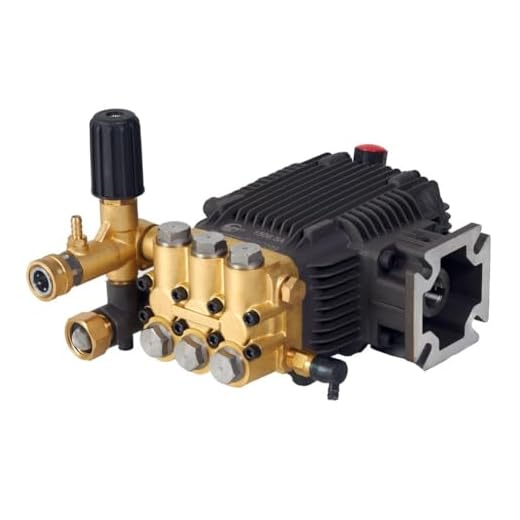
In practical terms, most high-pressure cleaning devices can effectively reach distances of up to 30 feet with extended nozzles. If you’re using a standard model, expect a maximum range of around 20 feet, which suffices for most outdoor tasks.
For optimal performance, consider the nozzle type. A zero-degree nozzle delivers a focused stream capable of reaching distant vertical surfaces but may require additional effort to maintain pressure without moving closer. Conversely, a wider-angle nozzle disperses water, making it less effective at longer distances but easier to handle for large cleaning areas.
When tackling tasks like cleaning multi-storey buildings or large vehicles, the choice of accessory and extension equipment matters. Several manufacturers offer compatible extension wands designed to increase reach without significantly compromising water pressure. Selecting the right model can elevate usability and efficiency during your cleaning efforts.
Distance Capabilities of Cleaning Equipment
For most models, the reach typically ranges between 15 to 30 feet. However, this can vary based on specific designs and attachments used. Here are key factors that influence the effective distance:
- Hose Length: Standard hoses usually measure about 25 to 50 feet, impacting how far one can operate from the water source.
- Tips and Attachments: Different nozzle types can alter spray patterns, thus affecting the effective range. A narrow tip can extend reach, while wider angles provide a broader cleaning area.
- Water Pressure: Higher pressure units often have enhanced distance capabilities due to stronger force. Assessing pressure ratings is essential when determining potential reach.
- Weight and Mobility: Heavier models or those lacking maneuverability might restrict movement, thereby limiting distance. Consider the unit’s portability and how easily it can be repositioned.
In practical scenarios, I recommend testing various distances during initial use, ensuring the equipment performs as intended. Keeping spare hoses on hand can also mitigate distance limitations for extensive tasks. Finally, always consult the manufacturer’s guidelines for specifics related to your chosen model.
Understanding Pressure Washer Specifications
For optimal usage, examine the model’s specifications closely. Key metrics include water flow rate, measured in litres per minute (LPM), and pressure output, indicated in bars or psi. A higher LPM means quicker cleaning, while psi determines the intensity of the jet. For most domestic tasks, a unit with 130-150 bar is adequate, while commercial duties may require upwards of 200 bar.
Assess the motor type; electric units are quieter but typically deliver less power compared to their petrol counterparts, which provide greater mobility and increased performance for heavy-duty applications. The hose length is also significant; a longer hose extends your reach for larger areas without repositioning the unit frequently.
Consider the nozzle types supplied with your equipment. Adjustable nozzles allow for versatility, enabling varying spray patterns suitable for different surfaces. Some models include specific attachments for cleaning intricate areas, like gutters or vehicles. The cleaning solution tank can also be a feature to look out for, facilitating the application of detergents for tougher jobs.
Always keep in mind the weight and portability of your selected unit. Lightweight models are easier to manoeuvre, while heavier ones may need wheels for effortless transport. Noise levels might also be a concern; electric units generally operate more silently than petrol-driven models.
Ultimately, comprehending these specifications will significantly enhance your effectiveness in tackling various cleaning tasks. Take your time to research brands and user reviews; hands-on experience through testing various options will help determine which features are most beneficial for your specific needs.
Types of Nozzles and Their Impact on Reach
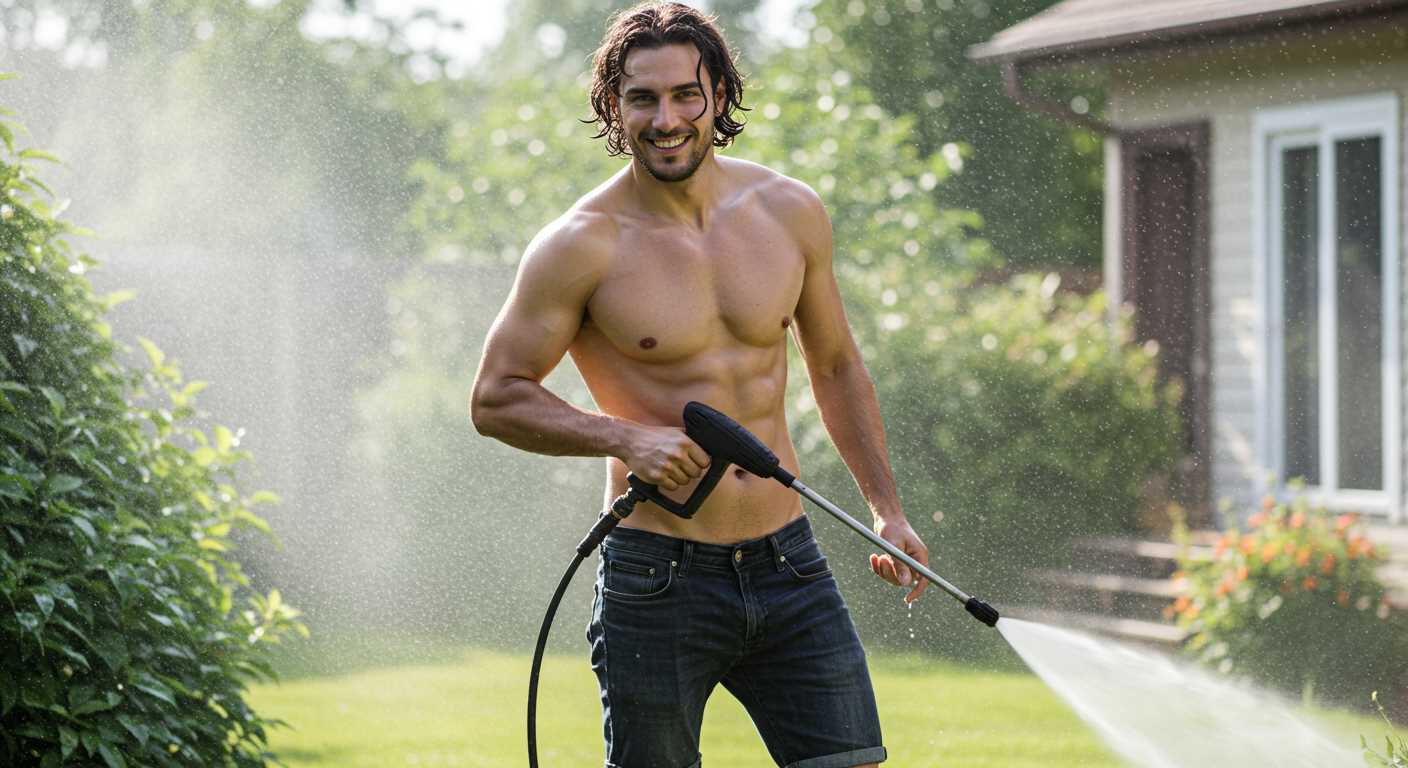
The nozzle type significantly influences the water trajectory and the reach of equipment. Three main categories stand out: narrow, medium, and wide nozzles. Each serves specific tasks and offers varying distances.
Narrow Nozzles

Narrow nozzles produce a concentrated jet. This setting excels at reaching distant spots, making it ideal for cleaning second-storey surfaces or accessing tight spaces. Expect a distance of up to 30 feet, depending on the device’s power. However, the focus on pressure limits the surface area covered, which could prolong cleaning times.
Medium and Wide Nozzles
Medium nozzles increase surface area coverage while maintaining decent distance, suitable for patios or decks. They typically achieve approximately 20 feet of reach. Wide nozzles, on the other hand, fan out water flow significantly but reduce the force, resulting in a limited effective range–around 10 to 15 feet. These are excellent for larger areas that require a gentler approach.
Choosing the right nozzle isn’t merely about reach; it’s also about the task at hand. Consider the nature of the surface and the desired effect to ensure optimal results. For challenging stains in elevated positions, opt for a narrow nozzle. For broader applications, a medium or wide nozzle will suffice, achieving efficiency without compromising control.
Optimal Pressure Settings for Distance
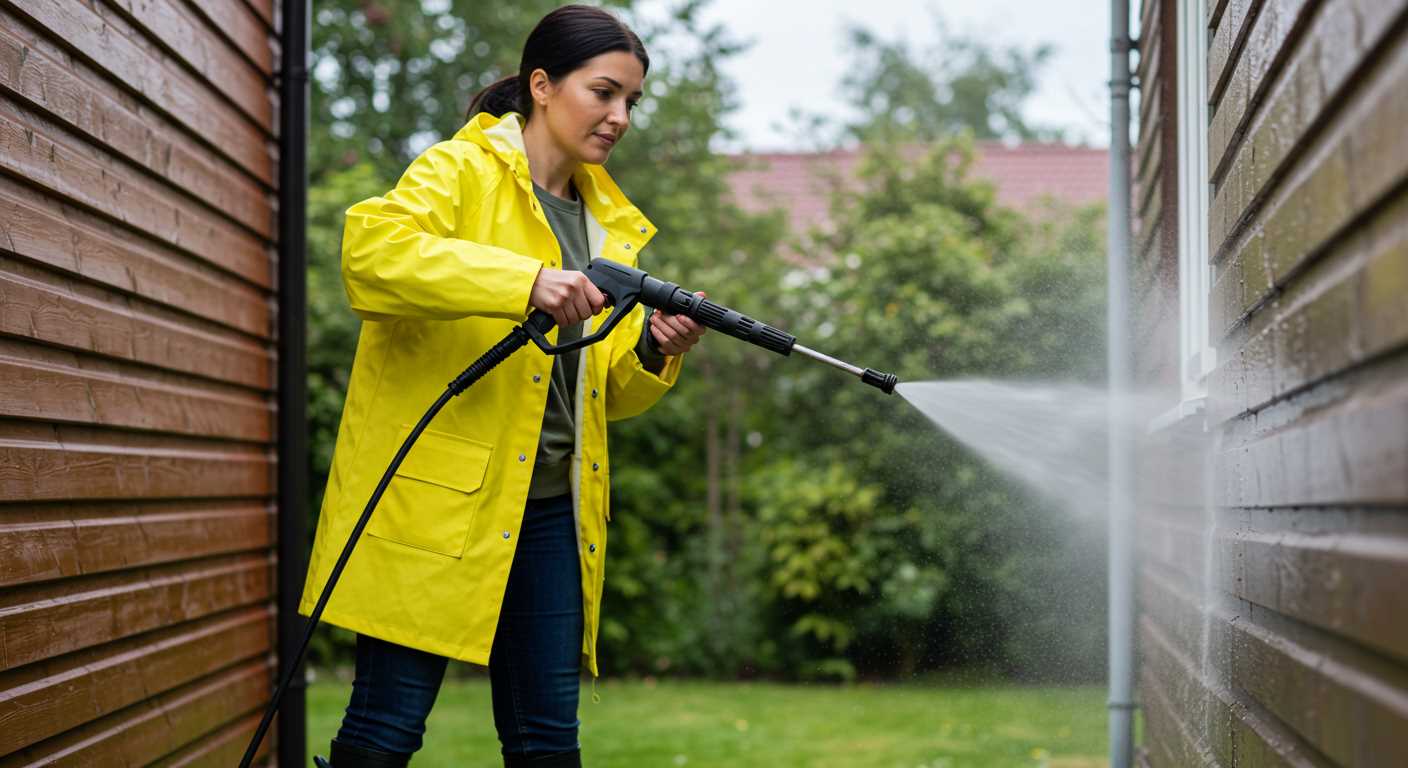
For maximum reach, it’s critical to select the right pressure level. Generally, residential units function best at around 1300 to 1900 PSI for light to medium tasks and can effectively achieve distances of approximately 20 to 25 feet.
For heavy-duty applications, models with pressure ranging from 2000 to 3000 PSI can extend cleaning distance to 30 feet or more. Always consult the manufacturer’s guidelines to prevent damage to surfaces being cleaned.
The distance achievable can also depend on the nozzle configuration. Here’s a breakdown:
- 0-degree nozzle: Offers the highest pressure, ideal for focused cleaning but has the least reach.
- 15-degree nozzle: Balances pressure and distance, effective for tough stains while extending reach slightly.
- 25-degree nozzle: Best for broader surfaces, optimising overall cleaning area with decent distance.
- 40-degree nozzle: Offers the widest coverage with reduced pressure, suitable for delicate tasks.
Environmental factors also play a role. Wind can disperse the spray cone, reducing effective reach. Use a lower pressure setting in windy conditions to maintain control and accuracy.
Finally, ensure the equipment and hoses are in top condition; any leaks or blockages can significantly limit the spray distance. Regular maintenance and checks are essential for sustained performance.
Using Extension Wands to Increase Range
To maximise reach without moving equipment, I recommend using extension wands. These tools significantly enhance your ability to access hard-to-reach areas, going beyond standard lengths. Typically, these wands can extend anywhere from 24 inches to over 5 feet, depending on the model.
When selecting an extension wand, ensure it is compatible with your current equipment. Most models feature universal fittings; however, verifying specifications will prevent any compatibility issues. Opt for lightweight materials, such as aluminium or composite, to maintain ease of use during prolonged tasks.
Adjustable wands allow for versatile applications. Look for options that enable angle adjustments, making them suitable for various cleaning scenarios, such as roofs, high walls, or large machinery. Additionally, some manufacturers produce telescoping models that let you alter the length precisely as needed.
Utilising an extension wand often leads to improved safety by reducing the need for ladders or scaffolding. Always follow manufacturer guidelines regarding maximum recommended lengths and water pressure compatibility to ensure longevity and optimal performance of the wand.
For best results, combine extension wands with appropriate nozzles tailored for the job. A fan nozzle is excellent for wider coverage, while a zero-degree nozzle offers targeted cleaning for tough stains. Matching the wand’s extension with the right nozzle ensures a more effective approach to cleaning.
In summary, extension wands not only enhance reach but also improve safety and efficiency. Investing in a quality model tailored for your cleaning tasks will pay off in terms of time saved and improved cleaning outcomes.
Limitations of Water Pressure and Distance
The reach of a cleaning device is influenced significantly by the water output. Standard units typically operate within a range of 1000 to 3000 PSI, but this varies among models. The height from which the water is expelled also plays a role. At greater distances, the intensity diminishes, leading to ineffective cleaning over time.
Distance reduction begins at approximately 10 to 15 feet. This is where the pressure drops noticeably, and the ability to remove grime or dirt wanes substantially. Beyond this threshold, users will need to adjust their approach. Opting for attachments like extension wands can counteract this natural decline.
Water volume or flow rate is measured in gallons per minute (GPM). Generally, units providing higher GPM ratings facilitate better coverage but can compromise intensity. As flow increases, pressure may decrease. Thus, a balance must be achieved between these two attributes for optimal performance.
| Parameter | Typical Range | Impact on Distance |
|---|---|---|
| Water Output (PSI) | 1000 – 3000 | Higher PSI leads to longer reach but diminishes with distance. |
| Flow Rate (GPM) | 1.5 – 2.5 | Higher GPM improves coverage, may decrease intensity. |
| Distance Impact | 10 – 15 feet | Significant reduction in cleaning ability beyond this range. |
Environmental factors also contribute: wind, humidity, and temperature can affect water trajectory and efficiency. Keeping these variables in mind can yield better results during cleaning tasks.
When selecting equipment, consider the specific cleaning requirements and conditions. Every feature must align with the intended use to ensure maximum effectiveness.
Practical Applications for Different Distances
Regular tasks like cleaning driveways or patios demand different techniques based on how far the stream of water travels. For standard residential areas, a distance of around 15 to 20 feet usually suffices. This range is practical for efficiently removing dirt and grime without excessive water consumption.
Extended Reach for High Areas
For elevated surfaces, such as second-storey windows or high walls, using extension wands is beneficial. These tools allow operation at heights exceeding 30 feet, ensuring thorough cleaning without the need for ladders. Combine the right nozzle and pressure settings for maximum effectiveness.
Far-Off Structures and Fences
When addressing wider areas, such as long fences or large outdoor equipment, keeping the sprayer within 30 to 40 feet maintains pressure while allowing versatility in approach. Utilizing rotary nozzles can also help expand the cleaning area, making it possible to tackle extensive surfaces with fewer passes.
Different surfaces necessitate distinct settings. For instance, softer materials like wood may require reduced power. Always adjust the distance and pressure accordingly to avoid damage, ensuring optimal results across various applications.
Maintenance Tips for Consistent Performance
Regularly checking the water intake filter prevents clogs that can diminish efficiency. Clean it monthly to ensure unobstructed flow.
Inspect hoses for wear and tear. Replace damaged sections to avoid leaks, which can reduce operational power. Always store hoses in a dry, shaded area to extend their lifespan.
Change the oil on gas-powered units as per manufacturer recommendations. Using fresh oil keeps the engine running smoothly and reduces wear.
Fuel Quality Management
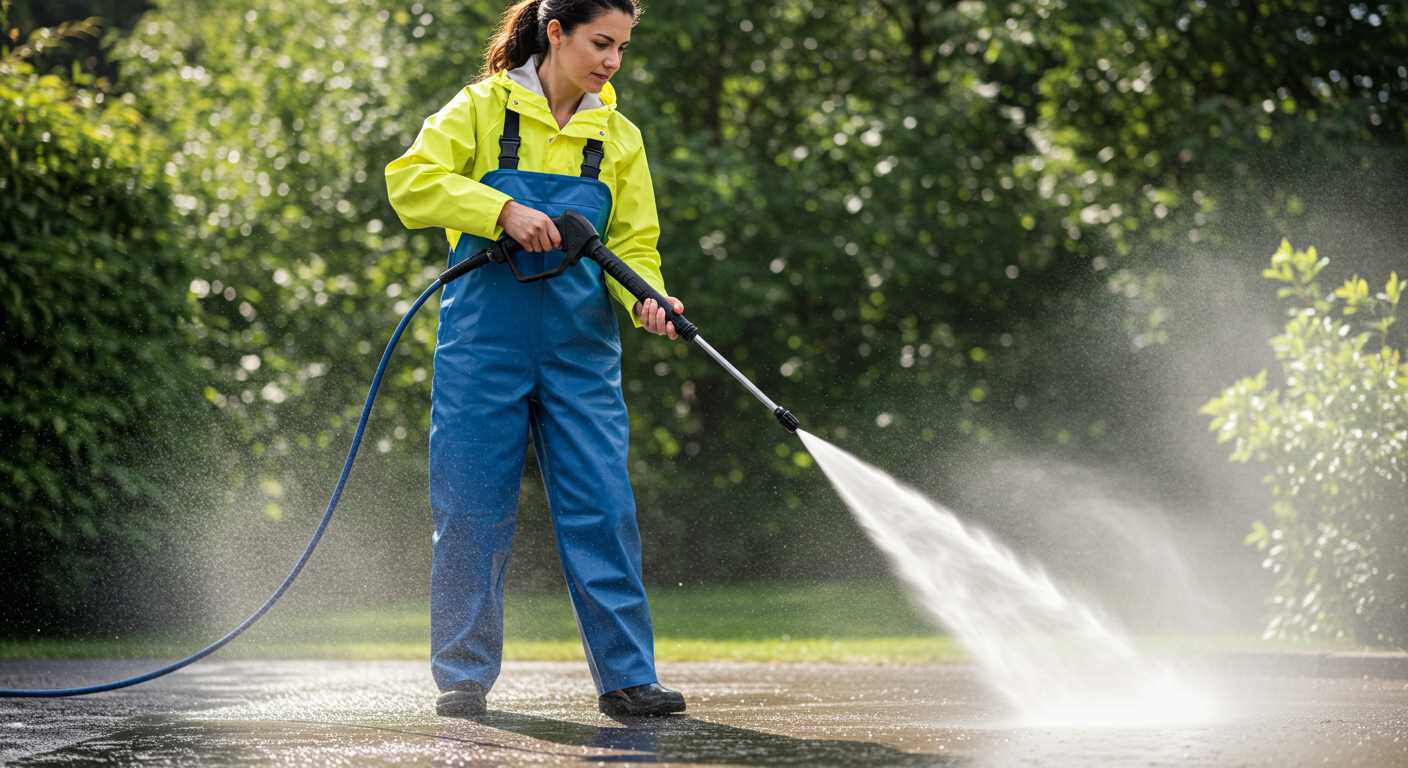
Use high-quality fuel and consider adding a fuel stabiliser if the equipment is used infrequently. This practice helps prevent engine problems created by stale fuel.
Nozzle Care
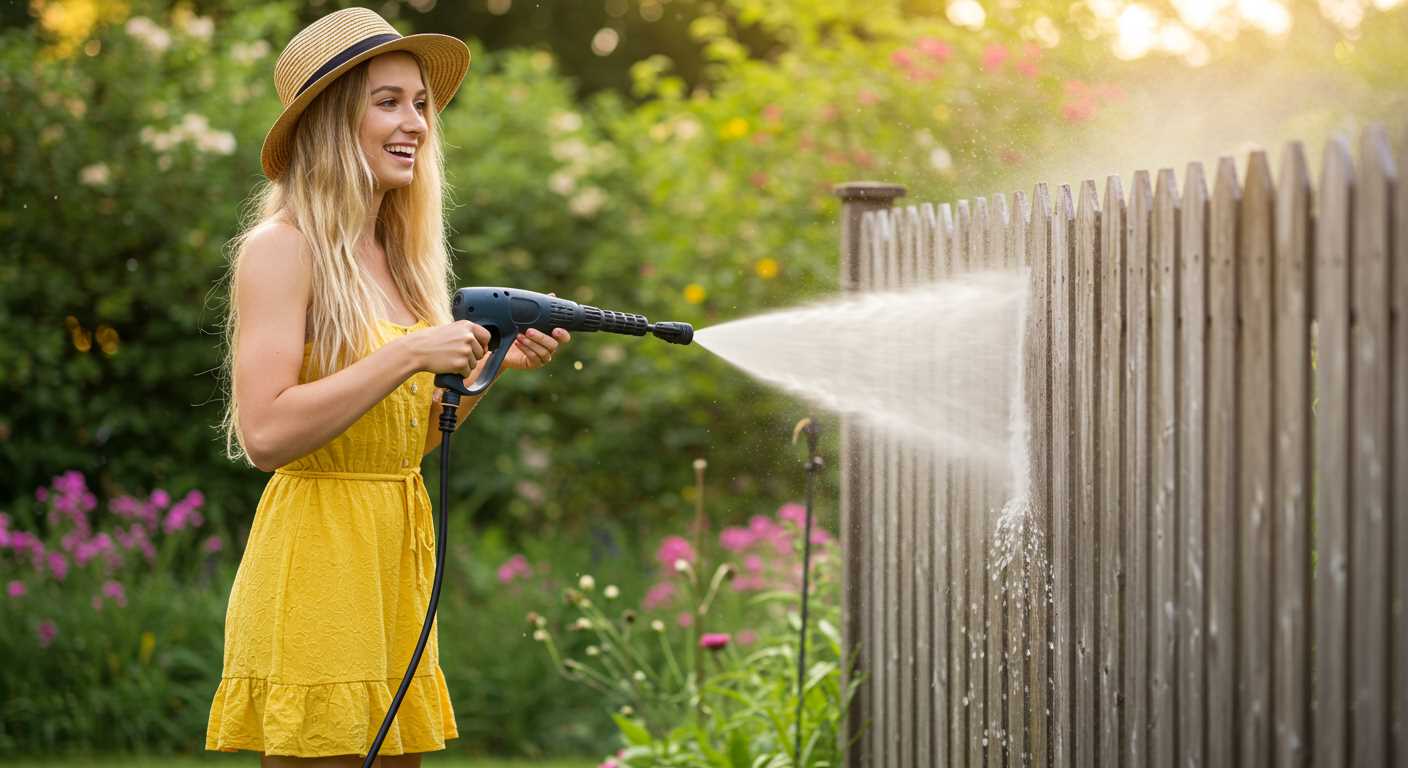
Check nozzles for blockages and clean them regularly. Accumulated debris can drastically affect the output pattern and reach. Ensuring they are in optimal condition guarantees maximum efficiency.
Finally, during off-seasons, ensure the machine is winterised to prevent internal damage. Flushing the system with a suitable antifreeze protects against freezing temperatures.









